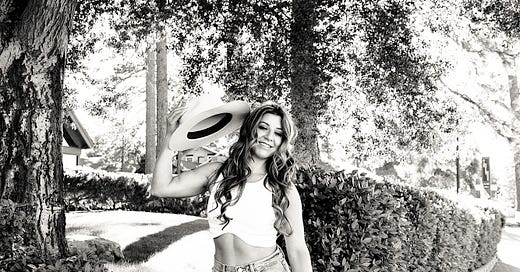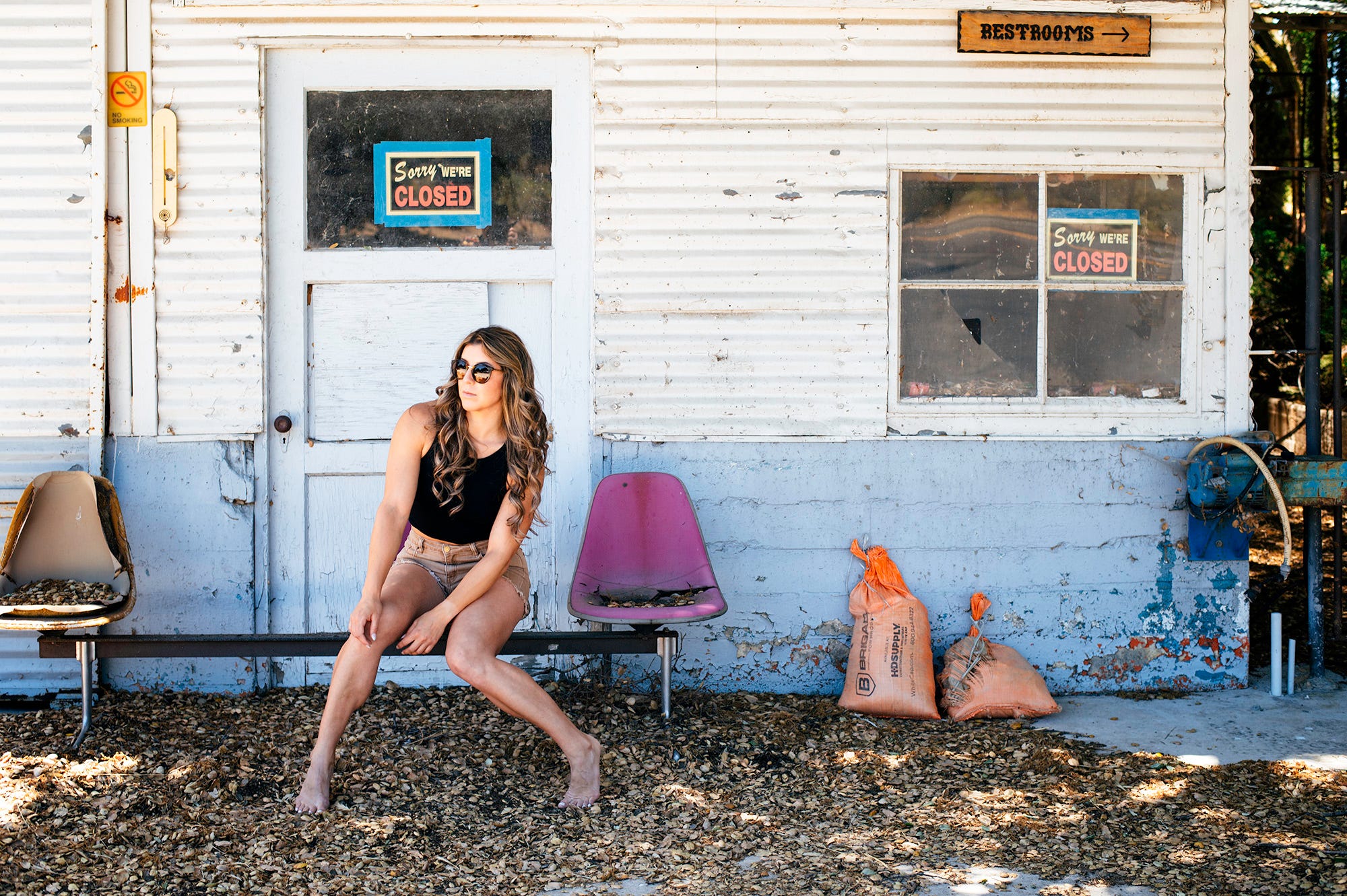California Portraits, Bad Light, and Habits That Help, Habits That Don't
A day late, but still filled with photo goodness.
“We are what we repeatedly do. Excellence is not an act, but a habit.” — Aristotle
Habits are tough to break, tough to form, and tough to explain.
“That’s a habit I have.”
But why? Why do you have a habit that seems so easy to define to me, yet controls so much of what you do?
We look at other people’s habits with a kind of questioning stance.
I wouldn’t do that.
That holds them back.
Why on earth would someone do that?
Seems illogical.
And, interestingly enough, they are saying the same thing about our habits.
Habits, of course, come in many flavors.
There are the ones we are aware of, the ones we aren’t aware of, and those that are so hidden that even if we were capable of being aware of them, we would see them as justifications for our core beliefs, which in themselves are habits.
We aren’t going to discuss headwear for nuns, so those habits are off the table.
In fact, we aren’t really going to discuss good or bad habits. There are only so many terabytes available.
We are going to look at doing things consistently until they ARE a habit.
Photography is a habit that contains many other habits that help or hinder us as we stumble along the journey.
Have you ever taken a moment to look at yourself while making photographs? No, not a mirror, or the reflection on the side of the air filter on a chromed-up Harley.
We are talking about what you do, when you do it, how you get from here to there to make the shot.
Are you deliberate?
Or are you scattered?
Are you prepared down to the last detail?
Or do you take more of a ‘let’s wing it and see what happens” stance?
No right or wrong answer, just being aware of that overarching habit can be important.
When we understand why we do something, we can dissect it, fix it if it needs fixin’, or do more of it if it needs enhancin’.
Watch closely how you do your work… like an outsider would. Make mental notes.
Ask yourself why you are doing that.
Make mental notes and transfer them to paper when you get a moment.
Ask yourself if doing what you did helped the shoot or hindered it.
When you break it down to the point of asking questions about your own behavior on a photo shoot, you can then see what may be working and what may not be.
And knowing the problem is the best way to start fixing it.
At the same time, knowing what makes the shoot work is the best way to start expanding that.
I was reminded about these habits this weekend.
I went to California (6-hour drive) to do a photo shoot for my upcoming Environmental Portrait class.
(And I paid $6.80 a gallon for gas in Ocotillo Springs… what?)
The area I chose to shoot was not done for reasons I normally would have chosen a site. My model friend and fitness model, Bri, lives in San Diego, so I wanted to have a place to meet that was convenient for her.
Not on the coast - the crowds are beyond belief and too damn many people for a shoot.
Not the desert - too damn hot.
So the area around Pine Valley was chosen.
Not the best area for what I wanted to do.
And June 26 is one of the worst times to do outside photography since the sun is directly above for most of the day.
So there were some challenges going into the shoot.
Challenge three was that I was totally unfamiliar with the area and Google Earth is not the same thing as the real Earth, so places I thought would be good turned out to be not so good.
In other words, the makings of a disastrous shoot.
I learned a long time ago that I can prepare for what I know only so much as I know it.
What I could control: Gear.
All batteries charged, backups charged, and ready.
Cameras tested and ready.
Lighting gear tested, trigger tested, backup trigger tested.
Gear assembled and check list made/checked off.
Habit.
And I also learned a long time ago to NOT expect things to be what they seem to be when you are planning.
In other words, I had no preconceived expectations about this area other than the landscape elements that I knew about.
I did not know that the town of Campo, CA, has no town.
I did not know that Pine Valley did not have a city center.
I did not know that there would be a bright, clear sky all damn day.
I did not know that there were few to no restaurants in the area.
All I knew is that come hell or high water - whatever that means - I was going to make photographs.
Habit.
If you know of anyone who may enjoy my newsletter, share it with them.
I try to never have expectations. That doesn’t mean I don’t plan, but I plan knowing that plans - like Cheetos on the console - have a habit of being chewed up by life.
Do I make backup plans?
Only to the extent that I am going to make something work. Something.
I do not come back with empty cards or unexposed film.
Habit.
On this shoot, I had several things go wrong, or at least challenge my order of things.
They were not big obstacles, but they taught me a lesson. I wrote them down in my journal when I got back to the hotel.
Just the act of writing them down helped me figure a few ways to make them less likely on the next shoot.
Habit.
And this habit of examining the shoot for what went right and what could have been better has been part of my photography life from nearly the beginning.
There are always things that could be better, no matter how long you have been shooting.
That’s part of the process. A truly fun part of the process.
Full disclosure: I also have some bad habits that I am slowly working on.
I make a mess when I am shooting. My gear comes out of the neatly organized bags, but does not make it back into the bags until after the shoot. I have no time to waste on packing sh*t when I am shooting. BITD, I had assistants who did it and did it well for fear of having to spend time in the “place where bad assistants go to think about their choices.” No one liked that place. It smelled bad. And it was hot.
I have a habit of stopping communication with anyone when I am shooting. You are welcome to speak to or about me, but I cannot hear you nor do I want to. I get really lost in the frame.
This is not a bad habit for creativity.
But when they are trying to warn you that a truck is bearing down on you and you are standing in the middle of the road because that is the only damn spot you can be in because of the background interfering with the flow of the dress and the light is good… it is NOT a good habit.
I need to work on that one. Maybe.
Ya know, there are a lot of habits that I have broken, and some habits I have created in order to be more efficient, creative, or perhaps less of an asshole.
Looking at what I do from the standpoint of it being a habit, then addressing that habit, changing it if necessary, or expanding on it if it is good has been, well, sort of a habit for me all through my journeys.
Whether it is motorcycling, photographing, drumming, or writing, habits are so vital to our success, and unfortunately, to our failure, that I think it is worth examining them again. And again.
Until the examination becomes a habit.
I will share some of the images we did on this shoot in the near future.
We even have some behind-the-scenes footage… heh.
What habits do you have when shooting?
Are they good?
Or should they be sent to the place where bad habits go to think about their choices?
Thanks for reading, you wonderful subscribers.
If you would like to support this newsletter, look into the Premium membership. It’s not a lot of money, but it does help me pay for gas in Ocotillo Springs… ya know.
$100M Offers: How To Make Offers So Good
People Feel Stupid Saying No
We all have to sell.
Our work, our service, our bid, our pricing, our selves.
But understanding the sales part of life is somewhat difficult.
This book breaks it down to a science. I have listened to it three times now, and tomorrow afternoon I will be doing it while reading it on my Kindle.
Pen and paper in hand.
I am going to learn these rules and reasons for sales and why people buy and put them into practice.
I suggest - as does the author - that you read the kindle version as you listen to the Audible one.
But at least read the Kindle version.
It will be the best two bucks you have spent in a long time.
(BTW, he discusses why he set the price so low and it makes a ton of sense to me.)
Now, for the premium members, we will discuss some of the challenges of dealing with less-than-perfect light.
Keep reading with a 7-day free trial
Subscribe to In The Frame to keep reading this post and get 7 days of free access to the full post archives.






